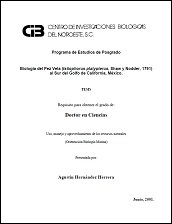Changes of soil bacterial diversity as a consequence of agricultural land use in a semi-arid ecosystem
Autor
guo_chun ding
Yvette Piceno
Holger Heuer
ANGEL EDGARDO CARRILLO GARCIA
Gary Andersen
THELMA ROSA CASTELLANOS CERVANTES
Christoph Tebbe
Metadatos
Mostrar el registro completo del ítemResumen
"Natural scrublands in semi-arid deserts are increasingly being converted into fields. This results in losses of characteristic flora and fauna, and may also affect microbial diversity. In the present study, the long-term effect (50 years) of such a transition on soil bacterial communities was explored at two sites typical of semi-arid deserts. Comparisons were made between soil samples from alfalfa fields and the adjacent scrublands by two complementary methods based on 16S rRNA gene fragments amplified from total community DNA. Denaturing gradient gel electrophoresis (DGGE) analyses revealed significant effects of the transition on community composition of Bacteria, Actinobacteria, Alpha- and Betaproteobacteria at both sites. PhyloChip hybridization analysis uncovered that the transition negatively affected taxa such as Acidobacteria, Chloroflexi, Acidimicrobiales, Rubrobacterales, Deltaproteobacteria and Clostridia, while Alpha-, Beta- and Gammaproteo-bacteria, Bacteroidetes and Actinobacteria increased in abundance. Redundancy analysis suggested that the community composition of phyla responding to agricultural use (except for Spirochaetes) correlated with soil parameters that were significantly different between the agricultural and scrubland soil. The arable soils were lower in organic matter and phosphate concentration, and higher in salinity. The variation in the bacterial community composition was higher in soils from scrubland than from agriculture, as revealed by DGGE and PhyloChip analyses, suggesting reduced beta diversity due to agricultural practices. The long-term use for agriculture resulted in profound changes in the bacterial community and physicochemical characteristics of former scrublands, which may irreversibly affect the natural soil ecosystem."
Colecciones
Ítems relacionados
Mostrando ítems relacionados por Título, autor o materia.
-
PROMOCIÓN DEL PERIFITON PARA EL CULTIVO DE CAMARÓN BLANCO: HACIA UNA ACUICULTURA ECOLÓGICA
DOMENICO VOLTOLINA LOBINA; JUAN MANUEL AUDELO NARANJO; MARIA DEL ROSARIO PACHECO MARGES -
Suelo y Erosión
YOLANDA LOURDES MAYA DELGADO


